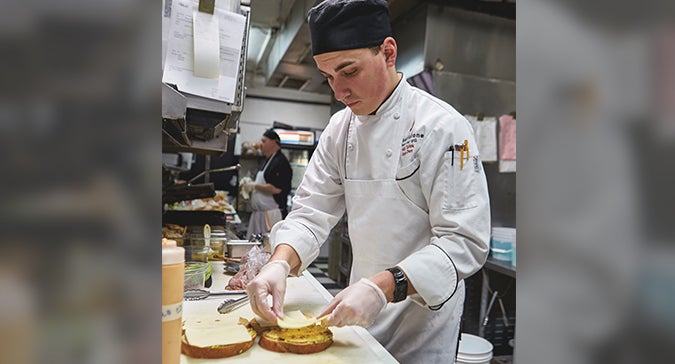The pace of pay hikes could make a big difference for operators, staffers and customers
The push toward higher minimum wages keeps building, and it’s an issue operators need to know about. The questions are clear: What would an increase do to businesses that rely heavily on hourly employees? What would happen with tipped employees? What are the drawbacks and benefits to an increase?
As of January 2016, the minimum wage ranged from a low of $10.30 in New Brunswick to a high of $12.50 in the Northwest Territories. However, several provinces allow for a slightly lower minimum wage, ranging from $9.05 to $10.70, for servers, bartenders and other tipped employees. This is referred to as the liquor-server wage.
Federal NDP Leader Tom Mulcair made a $15 federal minimum wage a central part of his 2015 election platform. He lost the election, but there is still movement to raise the minimum wage dramatically in several provinces. The BC Federation of Labour and other organizations have been fighting to boost that province's minimum wage to $15 per hour; in Alberta, new Premier Rachel Notley has reaffirmed her campaign commitment to institute a $15 minimum wage by 2018. She also seeks to eliminate the liquor-server wage this year.
Wage changes are still on the table
Restaurants Canada has launched a campaign asking the Alberta government to reconsider these plans. “Restaurant owners aren’t opposed to minimum-wage increases, but they want them to be introduced at a pace that’s manageable for labour-intensive businesses operating on very thin profit margins,” says Mark von Schellwitz, Vice President Western Canada for Restaurants Canada.
A Restaurants Canada survey of Alberta restaurant operators found that 98% believe implementing a $15 minimum wage by 2018 will be “very negative.” Nine out of 10 (89%) say they would be forced to increase their prices. And 49% said they would have to lay off staff.
Restaurants Canada estimates increasing the minimum wage to $15 per hour by 2018 would force the average restaurant with 25 employees to cut three jobs or reduce 3,300 employee hours to stay in business.
“Raising the minimum wage this much this fast would only hurt the people the government is intending to help,” von Schellwitz says. He points out that the restaurant industry is the fourth-largest private sector employer in the province, so reducing employee hours and cutting staff would have a major impact on the economy.
Restaurants Canada also opposes removing the liquor-server wage. “Right now, liquor servers can make considerably more than the minimum wage because of tips,” von Schellwitz says. “A $15 minimum wage would lead to fewer hours and fewer tips, reducing overall income.”
In addition to preserving this wage differential, Restaurants Canada would like to introduce another one, an entry-level wage that would incentivize restaurants to hire students for their first jobs. “The U.S. has these kinds of differentials in place and they work well,” von Schellwitz says.
Top level workers have the most to gain
Benefits to a higher hourly wage do exist. Higher wages would make the industry more competitive for top-level workers, maintains Gordon Food Service Customer Effectiveness Manager Ken Wasco. Some also argue that higher wages—especially if liquor-server wages are eliminated—would also simplify bookkeeping for operators.
The giant question: Would the minimum wage increase actually result in business failure?
A look at the experience of our neighbours to the south might prove instructive. The Seattle Times initially examined this question in a March 2015 feature it updated in January of this year. Just after Seattle, Washington, raised the minimum wage, a half-dozen or so of the city’s restaurants closed. A magazine article blamed the higher wage, and the newspaper decided to take a second look. It found no link between higher wages and the closures, mostly because at the time of the closings, the wage increases hadn’t occurred. Seattle’s minimum wage hike is taking place in stages, with larger employers (501 or more employees) paying $15 an hour by 2017, and smaller employers (500 or fewer workers) reaching $15 an hour by 2021. The in-between wage, launched in April 2015, is $11 an hour.
While the higher wage wasn’t forcing a mass closure of restaurants, it did have operators discussing how to cover them. Seattle franchisees of a national sandwich chain, according to the article, had discussed either raising menu prices or putting a 4% surcharge on the entire menu.
For now, the good-ish news seems to be that the $15 increase, if it is to appear at all, is still in the future. That gives restaurateurs plenty of time to weigh options—raise prices? reduce staff? eliminate tipping?—plus some time to fight what appears to be a quickly rising tide.

























